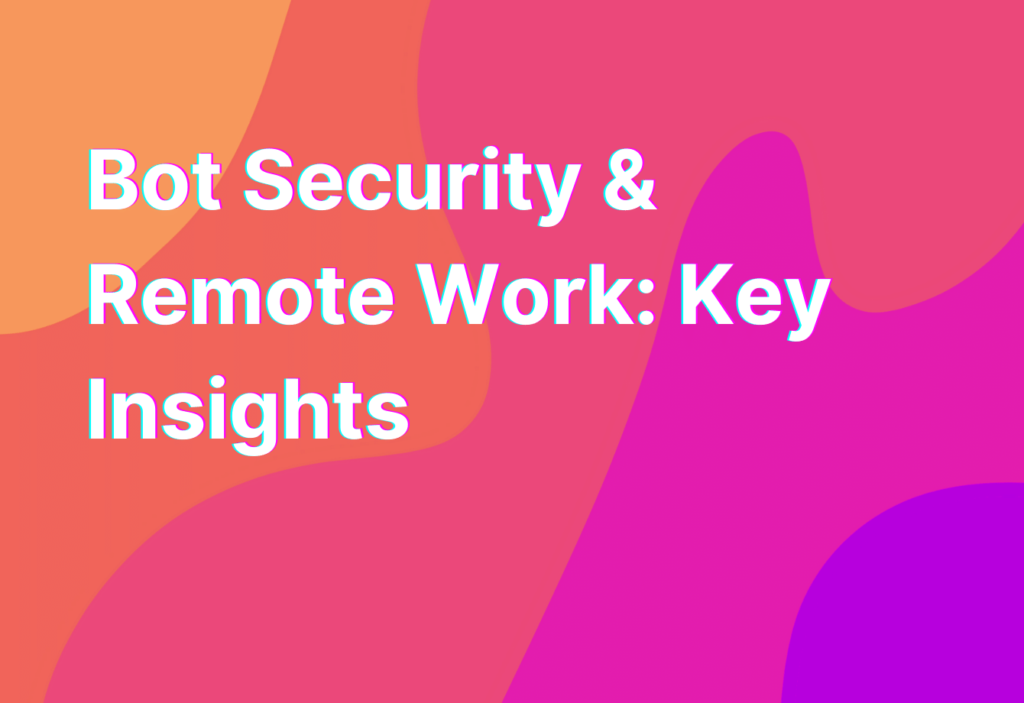Bot Security & Remote Work: Key Insights
Hey there, remote work enthusiasts! It’s Ashley here, your friendly remote work advocate with another informative blog post. Today, we’re diving into the fascinating world of bot security and its relevance to remote work. So grab your favorite cup of coffee and let’s get started!
What is a Bot?
Before we delve into the nitty-gritty of bot security, let’s make sure we’re all on the same page about what a bot actually is. In simple terms, a bot is a software application that performs automated tasks. These tasks can range from simple repetitive actions to complex interactions with humans.
Now that we have a basic understanding of bots, let’s explore why bot security is crucial in the context of remote work.
The Role of Bots in Remote Work
In the remote work landscape, bots play a significant role in streamlining processes, enhancing productivity, and improving communication. From chatbots that provide customer support to task automation bots that handle repetitive tasks, these digital assistants have become an integral part of remote teams.
However, with great power comes great responsibility, and that’s where bot security comes into play. Ensuring the security of these bots is essential to protect sensitive data, prevent unauthorized access, and maintain the overall integrity of remote work environments.
The Risks of Insecure Bots
Now, let’s talk about the potential risks associated with insecure bots. Just like any other software application, bots can be vulnerable to security breaches if not properly protected. Here are some key risks to be aware of:
- Data Breaches: Insecure bots can become a gateway for hackers to gain unauthorized access to sensitive data, putting both individuals and organizations at risk.
- Malicious Activities: Bots with weak security measures can be exploited by cybercriminals to carry out malicious activities, such as spreading malware or launching DDoS attacks.
- Identity Theft: If a bot is compromised, it can be used to collect personal information, leading to potential identity theft and fraud.
- Reputation Damage: Insecure bots can tarnish the reputation of remote teams and organizations, eroding trust among clients and stakeholders.
- Compliance Violations: Depending on the industry, remote teams may need to comply with specific regulations and standards. Insecure bots can lead to compliance violations and legal consequences.
Now that we understand the risks, let’s explore some key insights and best practices to ensure bot security in remote work environments.
Key Insights for Bot Security in Remote Work
- Implement Strong Authentication: Ensure that bots have robust authentication mechanisms in place to prevent unauthorized access. This can include multi-factor authentication and secure API keys.
- Regularly Update and Patch: Keep your bots up to date with the latest security patches and updates. This helps address any vulnerabilities and ensures that your bots are protected against emerging threats.
- Encrypt Data: Protect sensitive data by encrypting it both at rest and in transit. Encryption adds an extra layer of security and makes it harder for unauthorized individuals to access the data.
- Monitor and Audit: Implement monitoring and auditing mechanisms to track bot activities and detect any suspicious behavior. This allows for timely response and mitigation of potential security incidents.
- Train Remote Teams: Educate your remote teams about bot security best practices, such as avoiding suspicious links and attachments, and practicing good password hygiene.
By following these key insights, remote teams can significantly reduce the risks associated with insecure bots and create a more secure work environment.
Wrapping Up
As remote work continues to thrive, the importance of bot security cannot be overstated. Insecure bots can pose significant risks to remote teams and organizations, compromising sensitive data and damaging reputations. By implementing strong authentication, regularly updating and patching, encrypting data, monitoring and auditing, and training remote teams, we can ensure a more secure remote work environment.
If you want to dive deeper into the world of cybersecurity awareness in remote work, be sure to check out our Cybersecurity awareness page. Stay safe and secure, my fellow remote work enthusiasts!


